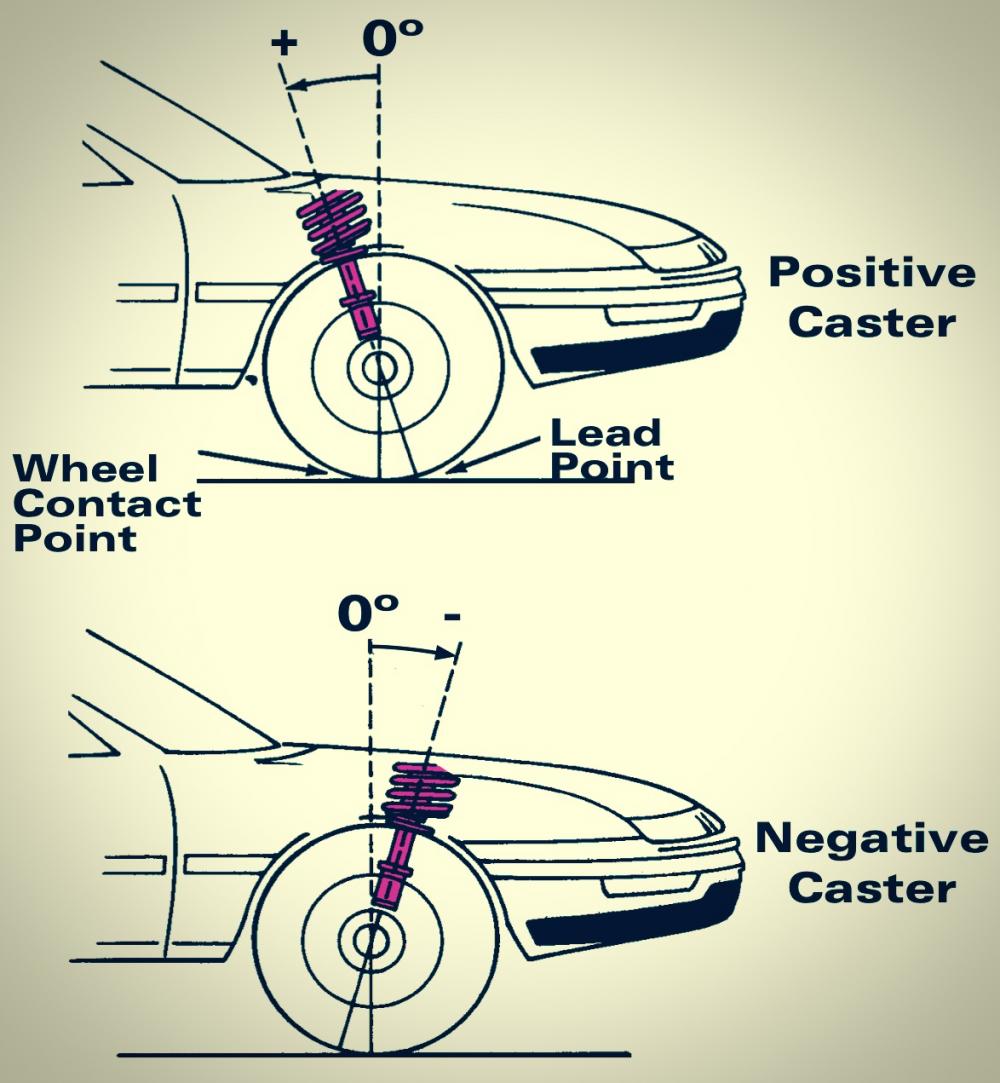This suggests they could continue with the hybrid inwash and downwash
- Login or Register
No account yet? Sign up
This suggests they could continue with the hybrid inwash and downwash
I wonder how this guy can know all these things.
IMO, if this were true, with a much wider undercut, the end of the sidepods would have to be moved much further back and at this point the mixed solution of inwash/downwash would no longer be viable.
Sorry, I struggle to understand how caster can influence antidive in a f1 suspensiongordonthegun wrote: ↑14 Jan 2024, 16:25So, speculating on the 2024 Ferrari singleseater or project 676, I see:
1) Suspensions:
Push rod at front and pull at rear (like last year) but with a different geometry of the arms.
In particular: front with a higher value of positive caster (anti-dive) and rear with a higher value of negative caster (anti-squat).
Casters:
https://www.automobilismo.it/files/arti ... g-0003.jpg
I'm not an expert but, intuitively, also looking at my drawing, I think that with a higher positive caster the lowering of the front is reduced because, when a downward force acts on the front, the horizontal movement of the suspension increases to the detriment of the vertical one. In this way the front lowers less.alleyoop wrote: ↑15 Jan 2024, 19:37Sorry, I struggle to understand how caster can influence antidive in a f1 suspensiongordonthegun wrote: ↑14 Jan 2024, 16:25So, speculating on the 2024 Ferrari singleseater or project 676, I see:
1) Suspensions:
Push rod at front and pull at rear (like last year) but with a different geometry of the arms.
In particular: front with a higher value of positive caster (anti-dive) and rear with a higher value of negative caster (anti-squat).
Casters:

They have very good sources inside Ferrari, that is a fact that has been proven in the recent years.gordonthegun wrote: ↑15 Jan 2024, 18:32I wonder how this guy can know all these things.
The translated tweet says a lot more. Why should we believe him?
Translation (by Google and me, the Spanish GP is that of 2023):
"Ferrari 2024: the bellies will not have the Mclaren/Aston Martin tubs but will maintain a less extreme solution, already partially seen on the SF-23, and closer to what was seen on the Red Bull RB19. A good part of the bodywork will be an evolution, not a revolution, of the update seen at the 2022 Spanish GP. Thanks to the elimination of important chassis limitations, Ferrari will no longer use the front part of the belly to move the turbulent wake of the front tires but it will open up a significant undercut to bring better flow to the rear end. For this reason, the design of the outermost fence positioned at the entrance of the floor will be completely revised.".
So Ferrari knows and allows this.DoctorRadio wrote: ↑15 Jan 2024, 22:00They have very good sources inside Ferrari, that is a fact that has been proven in the recent years.gordonthegun wrote: ↑15 Jan 2024, 18:32I wonder how this guy can know all these things.
The translated tweet says a lot more. Why should we believe him?
Translation (by Google and me, the Spanish GP is that of 2023):
"Ferrari 2024: the bellies will not have the Mclaren/Aston Martin tubs but will maintain a less extreme solution, already partially seen on the SF-23, and closer to what was seen on the Red Bull RB19. A good part of the bodywork will be an evolution, not a revolution, of the update seen at the 2022 Spanish GP. Thanks to the elimination of important chassis limitations, Ferrari will no longer use the front part of the belly to move the turbulent wake of the front tires but it will open up a significant undercut to bring better flow to the rear end. For this reason, the design of the outermost fence positioned at the entrance of the floor will be completely revised.".
They say Ferrari tried many versions of sidepods, including the waterslides, and decided for an evolution of those of the SF-23 (going RB19 route) with a huge undercut.

They spent a huge chunk of time on it. I'm just wondering if it will produce any results in a real race. It's clear that in simulation, reducing weight gives a boost to acceleration, but will it help Ferrari succeed?Xyz22 wrote: ↑16 Jan 2024, 15:20According to Nugnes the 676 will be 6kg lighter compared to the SF 23.
https://it.motorsport.com/f1/news/f1-fe ... /10566335/
Translation of the article (only technical part):Xyz22 wrote: ↑16 Jan 2024, 15:20According to Nugnes the 676 will be 6kg lighter compared to the SF 23.
https://it.motorsport.com/f1/news/f1-fe ... /10566335/

They also had some revisions (Barcelona) that may hav added weight.
You are right, caster—especially on an F1 with double wishbone suspension, and as different to a strut-type suspension, as shown—doesn’t influence anti-dive coefficient though anti-dive geometry does affect caster angle throughout the suspension travel.alleyoop wrote: ↑15 Jan 2024, 19:37Sorry, I struggle to understand how caster can influence antidive in a f1 suspensiongordonthegun wrote: ↑14 Jan 2024, 16:25So, speculating on the 2024 Ferrari singleseater or project 676, I see:
1) Suspensions:
Push rod at front and pull at rear (like last year) but with a different geometry of the arms.
In particular: front with a higher value of positive caster (anti-dive) and rear with a higher value of negative caster (anti-squat).
Casters:
https://www.automobilismo.it/files/arti ... g-0003.jpg
